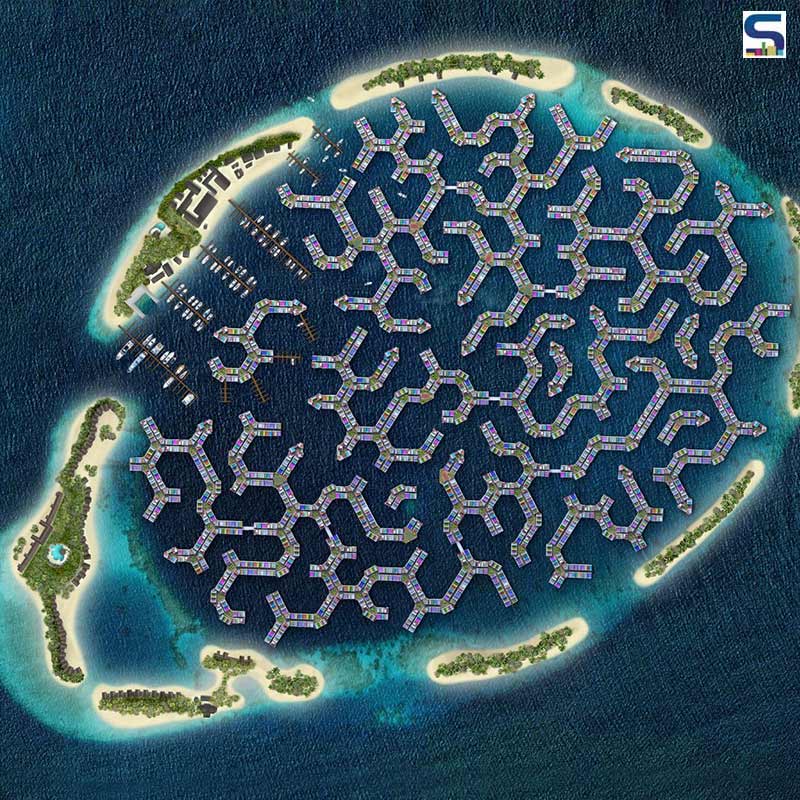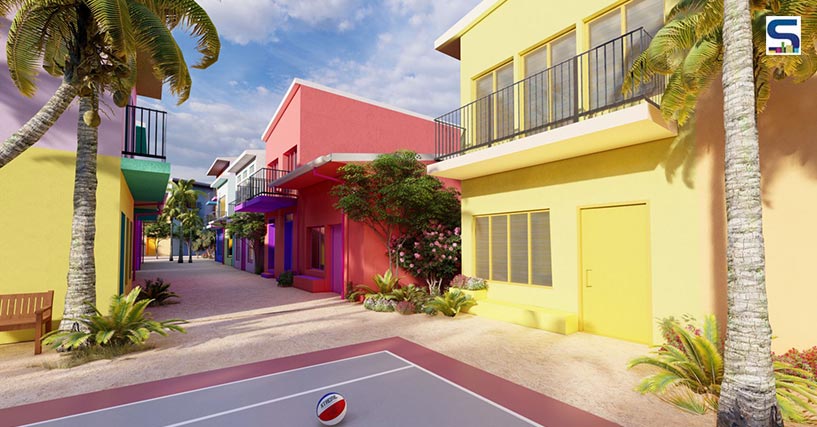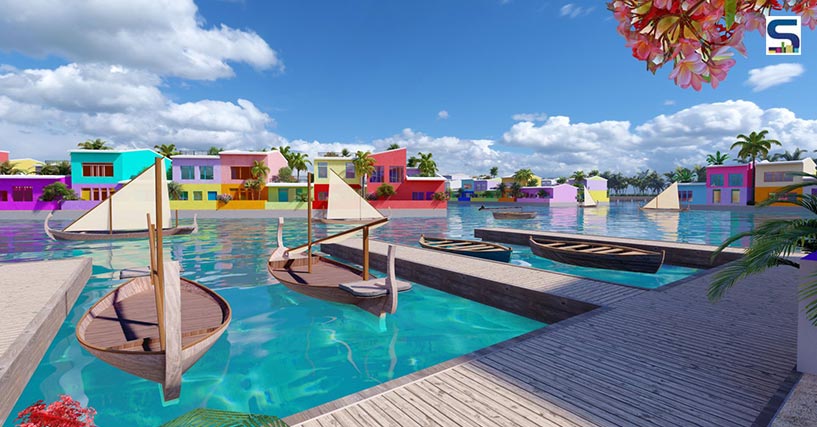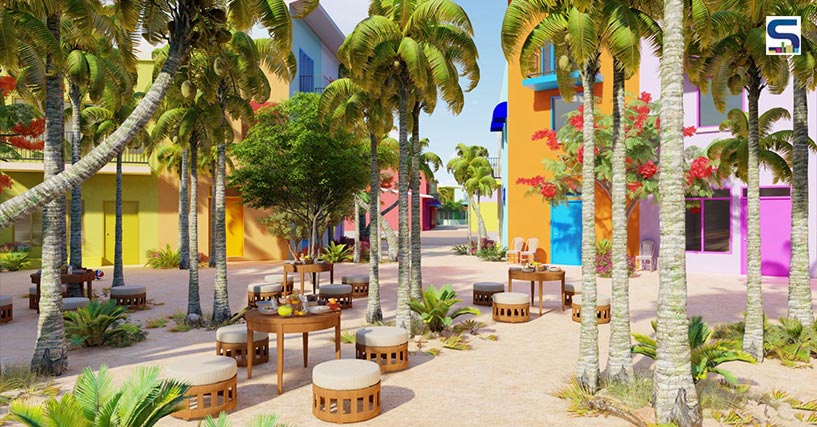
Nearly 99 per cent of the Maldives comprises the sea, which is home to the exotic marine ecosystem. Known for beautiful beaches with crystal clear blue waters that reflect the mighty blue sky, Maldives is a true island nation. Made of nearly 2,000 islands and atolls in the middle of the Indian Ocean, Maldives has now become vulnerable to the rising global warming and sea levels. Nearly 8 per cent of its land is less than a meter above sea level and the sea level is expected to rise to 1 m more by the end of the century. Given its current climatic situation, the entire country is expected to be submerged.
For this, Maldivians will be returning to the water with an eco-friendly floating project resonating with the human brain. The Government of the Maldives has partnered with architecture studio Waterstudio.NL in collaboration with the Netherland-based Dutch Docklands to unveil its plans for Maldives Floating City. Know more about the project on SURFACES REPORTER (SR).

Brain coral design
Accentuating the nature-based structure of roads and water canals that goes in hand with the nation’s scenic beauty, Maldives Floating City will be structured in an efficient way in which real brain coral is organized. With brain coral as the framework for design, the floating city aims at maintaining the harmony between living with nature and respect for the natural habitat. Thereby, emphasizing the responsibility of the nation toward coral protection.
Compiled with hexagon-shaped segments, coral design plays a crucial role in the city’s master plan. This distinctive geometry of coral will be connected to a ring of lush barrier islands that will act as breakers below. This would help in stabilizing the structure from the lagoon waves. Within the lagoon, sandy beaches will help stabilize and protect the structure. Coral reefs on the outside, however, will have hotels, restaurants and shops. Although a minimal impact on the coral reefs is expected during the construction of the city, the Maldives Floating City will grow artificial coral reefs made from glass foam which will stimulate new reefs and also act as water breakers.

A benchmark for a vibrant community
Set in a water lagoon, just 10 minutes away from the Maldivian capital Male and Male International Airport by boat, the Maldives Floating City is touted to be the world’s first true floating island city. Nestled against the backdrop of the Indian Ocean, this first-of-its-kind island city is expected to feature thousands of residences – all waterfront, floating and flexible with a functional grid spread across 200 hectare lagoon.
The floating city is expected to be big enough to house 20,000 people. Each rainbow-coloured building on the floating island is expected to be low-rise with wide balconies and sea-front views. Each of the 5,000 floating units is expected to be 100 sqm (plus 40m2 roof terrace) upward and will be priced from $250,000. The units will be constructed in a local shipyard and then towed to the floating city. They will be then attached to a large underwater concrete hull that will be screwed to the seabed on steel stilts.
Additionally, shops, homes and other services are expected to be established amid the plan-lined island. Furthermore, to enhance connectivity, a network of bridges, canals and docks will also be developed alongside a direct connection to the Male International Airport. The floating city will be emphasizing the boating community through the use of canals as the main infrastructure for transit, thereby reducing any land-based movement. The island will also be encouraging bicycles and electronic vehicles such as scooters and buggies, thus eliminating the need for cars.

A futuristic dreamscape poised to be a reality
This next-generation sea-level rise-proof urban development is inspired by traditional Maldivian sea-faring culture. Developed with a modern sustainable living approach, the floating city is expected to offer the most including full-scale technical, logistical and legal expertise with a mix of green technology. The ambitious floating city project promises owners to have the security of a premium real estate asset where the homeowners of the floating city will be qualified for Maldivian residency permits.
The futuristic dreamscape of Maldives Floating City will be constructed safely to mitigate the effects of climate change and rising sea levels. For instance, atop the floating city will hold the traditional Maldivian architecture which will be supported by the most eco-friendly construction possible, thereby creating a sustainable waterfront development. The nation, thus, aims to provide a viable blueprint for other countries by laying the groundwork to overcome climate change with the world’s first floating city.
At present, Maldives Floating City is in its final planning stages and its first units will be unveiled this month. Its construction is expected to begin this year and is expected to be completed in phases over the next half decade. While the city is expected to be completed by 2027, residents can start to move in by 2024. Upon completion of this phase, the city will work on its commercial and residential structures including a school, a hospital and a government building. Stay tuned as sales are expected to start soon alongside expressions of interest for the floating city.
Image credits: Waterstudio.NL